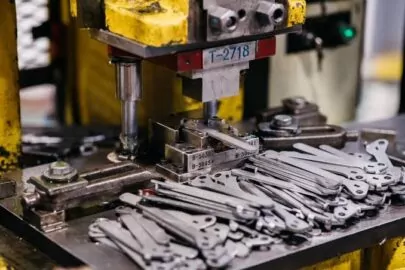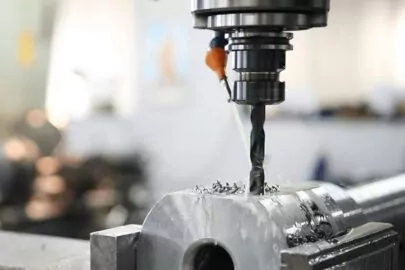Milling is a critical process in manufacturing, especially in CNC (Computer Numerical Control) machining. Two of the most common milling techniques are face milling and end milling. Understanding the difference between the two methods is crucial for achieving optimal results in various applications. These techniques are often compared but serve different purposes and have distinct advantages and limitations. In this article, we’ll discuss what face and end milling are, their features, applications, pros, and cons, and provide a comparative analysis to help you make the right choice.
Milling, in general, is the process of using rotary cutters to remove material from a workpiece and shape it into the desired form. The distinction between face and end milling lies in the orientation and direction of the cutting tools. While both methods are integral to machining, they are suited to different tasks and produce varied results. Choosing between the two can be challenging, especially when considering factors such as precision, speed, and the type of material you are working with.
What is Face Milling?
Face milling is a machining process in which a rotating tool removes material from the surface of a workpiece, producing a flat surface. The cutting edges of the face mill are located along its periphery and face. This process primarily creates flat, smooth surfaces or quickly machines large ones. Unlike end milling, face milling is typically performed on horizontal milling machines.
Features of Face Milling
One key feature of face milling is the large cutting surface. The tool used in face milling has multiple cutting teeth, which allows for the removal of a significant amount of material in a single pass. This makes it highly efficient for tasks requiring the machining of large surfaces.
Another essential feature is the angle of the cutter. In face milling, the cutting occurs mostly at the periphery, where the cutting edge meets the workpiece. This allows for a smoother finish on the material surface, as the tool cuts with a lower force than other methods.
Face milling also offers better control over the flatness and smoothness of the machined surface. The milling cutter is designed to engage the workpiece over a wider area, distributing the cutting force more evenly.
Applications of Face Milling
Face milling is widely used in the machining of large, flat surfaces. It is often employed in the automotive, aerospace, and manufacturing industries, where large components require precision and a high-quality surface finish. The process is ideal for machining materials like steel, aluminum, and other metals that require smooth, even surfaces.
Another common application of face milling is preparing parts before final assembly. For example, machine frames, engine blocks, and other large components are often face-milled to ensure flatness before being assembled or fitted with other parts.
Face milling is also used to remove material quickly when time is critical. Its ability to machine large areas in a short amount of time makes it a go-to technique for projects requiring efficiency.
Pros of Face Milling
- Efficient material removal: Face milling is fast, allowing large amounts of material to be removed in a single pass.
- High-quality surface finish: The process results in smooth, flat surfaces ideal for many industrial applications.
- Low cutting force: The cutting force is distributed evenly across the surface, reducing the stress on the cutting tool and workpiece.
Cons of Face Milling
- Limited to flat surfaces: Face milling is designed to create flat surfaces, so it cannot be used for more complex or intricate shapes.
- Requires large machines: Due to the size of the face mills and the nature of the operation, this process is typically performed on large, horizontal milling machines, which may not be accessible in smaller workshops.
What is End Milling?
End milling is another milling process where a rotating cutter with cutting teeth on both ends and sides removes material. Unlike face milling, end milling is typically used to create slots, pockets, and other complex shapes. It is generally performed on vertical milling machines, where the tool’s axis of rotation is perpendicular to the surface being machined.
Features of End Milling
End milling is characterized by its versatility. The tool can cut both horizontally and vertically, making it suitable for a wide range of applications. End mills have a smaller diameter than face mills, allowing for more precise cuts and the ability to reach into tighter spaces.
Another feature of end milling is the variety of tool shapes available. End mills come in many shapes and sizes, including ball-nose, square-end, and corner-radius. Each type of tool is designed for specific applications, such as creating rounded corners or producing sharp edges.
In end milling, the cutting action primarily occurs on the tool’s end rather than the periphery. This allows for greater precision, especially in smaller or more intricate cuts. It is also ideal for working on vertical surfaces or making grooves and slots.
Applications of End Milling
End milling is commonly used in applications that require precise cuts, such as in the production of molds, dies, and complex machine parts. It is especially useful in industries requiring intricate designs, such as electronics, medical devices, and aerospace.
One of the most common applications of end milling is creating pockets and slots. The tool can be guided along a precise path to remove material in a controlled manner, creating features like keyways, channels, or cavities within a workpiece.
End milling is also suitable for cutting materials that require high precision, such as metals, plastics, and composites. Its ability to produce detailed, intricate cuts makes it indispensable in CNC machining services.
Pros of End Milling
- Precision: End milling is highly accurate, allowing for intricate shapes and detailed features to be created.
- Versatility: The wide variety of end mill shapes and sizes makes this process suitable for various applications.
- Suitable for vertical surfaces: End milling can easily machine vertical surfaces or create grooves and slots.
Cons of End Milling
- Slower material removal: Unlike face milling, end milling is slower because it removes material in smaller amounts.
- Higher cutting force: End milling typically requires higher cutting forces, which can lead to more wear on the cutting tool.
Face vs End Milling: How to Choose
Several factors come into play when choosing between face and end milling. The choice depends on the type of material, the desired finish, the design’s complexity, and the project’s specific requirements. While both methods have strengths, understanding their differences is essential for selecting the right tool and process.
In general, if the goal is to quickly remove material from a large, flat surface and achieve a smooth finish, face milling is the better option. Face milling is faster and more efficient for large-scale projects, particularly with horizontal surfaces.
On the other hand, if precision and intricate designs are the priority, end milling is the preferred technique. End milling is more versatile and allows for detailed cuts, making it suitable for complex shapes and features.
The type of machine you have access to also plays a role in the decision. Face milling typically requires horizontal milling machines, whereas end milling is generally performed on vertical milling machines. Additionally, the size of the tool and the workpiece should be considered, as end milling can handle smaller, more intricate parts.
Ultimately, both processes are valuable in CNC milling services. Knowing when to use face vs. end milling can improve the efficiency and quality of your machining project.
Table Contrast
| Feature | Face Milling | End Milling |
| Tool Orientation | Perpendicular to surface | Parallel to surface |
| Cutting Surface | Primarily the periphery | End and sides |
| Application | Flat surfaces | Complex shapes and slots |
| Speed | Fast | Slower |
| Precision | Moderate | High |
| Machine Type | Horizontal milling | Vertical milling |
| Material Removal Rate | High | Low to moderate |
| Surface Finish | Smooth, flat | Detailed, intricate |
Conclusion
Understanding the difference between face and end milling is crucial for selecting the right technique for your CNC milling project. While both processes are vital in modern machining, they serve different purposes. Face milling is ideal for large, flat surfaces, offering speed and efficiency, while end milling excels in precision and versatility, making it suitable for more complex shapes and smaller components.By considering each method’s features, applications, pros, and cons, you can choose the right milling technique for your specific needs. Whether using face milling for fast material removal or end milling for intricate designs, both methods play an integral role in CNC milling services.
Great, Together



